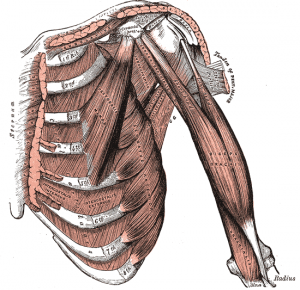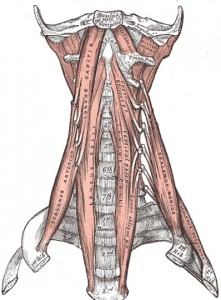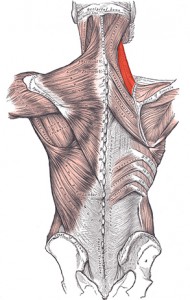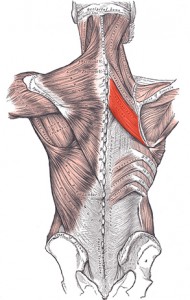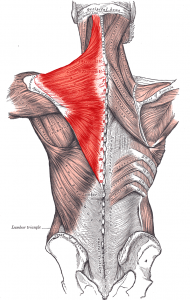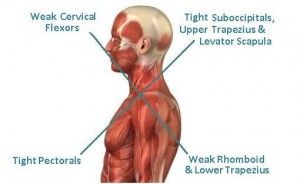 Upper cross syndrome highlights imbalances in particular muscle groups brought about due to poor postural patterns and a lack of core muscle tone. Upper cross syndrome can be corrected but as with many body issues solving the problem might need to come from another part of the body.
Upper cross syndrome highlights imbalances in particular muscle groups brought about due to poor postural patterns and a lack of core muscle tone. Upper cross syndrome can be corrected but as with many body issues solving the problem might need to come from another part of the body.
In upper cross syndrome we usually see the role of tight upper back muscles played by the upper trapezius and levator scapulae crossed with the tight upper chest muscles pectoralis major and minor. The part of the weak muscles are played by the lower trapezius and the rombhoid muscles at the back and the cervical flexors, longus capitis and longus colli at the front.
This problematic, but all too classic, pattern messes with the thoracic and cervical sections of the spine as well as the glenohumeral joint where the arm meets the shoulder.
As with so many postural problems there is a chicken and an egg dilemma when it comes to the origin of the issue. As the muscles at the upper chest tighten, and become overactive, the muscles of the upper back loosen and weaken. In the opposite direction as the muscles at the back of the neck tighten the muscles at the front of the throat weaken.
The muscles of upper cross syndrome.
Is it the forward movement of the cervical spine what is causing these muscles to go haywire or is it the muscles going batty that pulls the cervical spine out of alignment? And what role does the pelvis and core muscles play in the occurrence of upper cross syndrome?
As I have written many times before the curve of the lower, or lumbar, spine should be the same degree as the curve of the upper, or cervical, spine. For these two curves to be the same the muscles of the lower spine—most importantly the transverse abdominis and the multifidus—need to have enough tone to stabilize the lower curve.
There needs to be muscular support for the lumbar curve if we want any chance to realign the cervical curve. In addition to building core tone to support the head and neck, we need to stretch the tight muscles of the upper cross syndrome and strengthen the weak muscles.
It might be a long road requiring a lot of work but if you take a conscious approach to rebuilding your body anything it possible.

